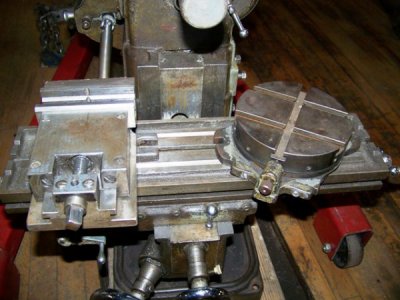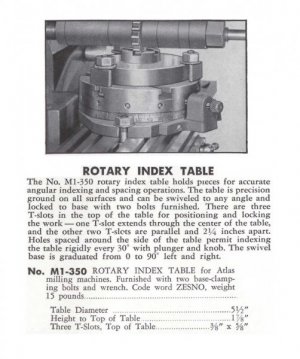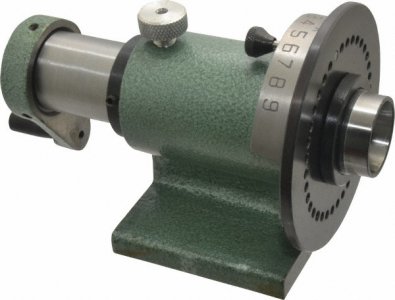If that is all you want to do with it is mill things like your chuck keys. But it isn't really "rotary". There are a number of small rotary tables on the market,though,which would fit the Atlas. Several sources offer 4" rotary tables. The next step up would be a 6",but that might bee too large to fit into the work envelope of the Atlas. Too bad a 5" isn't out there(as far as I know.)
You'll need to get a strong angle plate to use it horizontally to mill chuck keys. And then,devise a way to hold the keys while you mill them. Perhaps a VEE block with strong clamps would work after carefully centering it. I recommend that your angle plate have strong webs.
To tell the truth,if I wanted to mill chuck key squares on that mill,I'd stick it out of the side of the vise,mill a flat,then rotate it 90º, and check it with a square resting on the table. It will be MUCH more rigid. The Atlas I had worked best with narrow cutters(like 1/4" or less wide) Angled teeth are the best,too. And,they need to be SHARP.
DO MAKE yourself an OUTBOARD SUPPORT. Look on Tony Lathes site for Atlas mill pictures showing it. Back when I had the Atlas,there was no internet,and I had no catalog showing it. My knee jerked badly when I tried to mill steel. I was young back then,and did not know better. It would have helped EL MUCHO!!! And,not that hard to make.
You can only make things so snug. The outboard is the best help you will get for the mill.
Do you know that a separate company made a slotting attachment for that mill? And someone made a simple vertical head? It was driven off the spindle by a round(?) belt,made to turn 90º by jockey pulleys. You can see it all on Tony lathes site. I visited him in England. Long train ride from London. But,the farther North you go,the better England looks. And,the trains are so much better,faster,and more modern. Very high speed.
Don't take this post the wrong way: I am trying to be helpful as an experienced machinist.
I still have the correct Atlas mill vise. It was my first mill.




